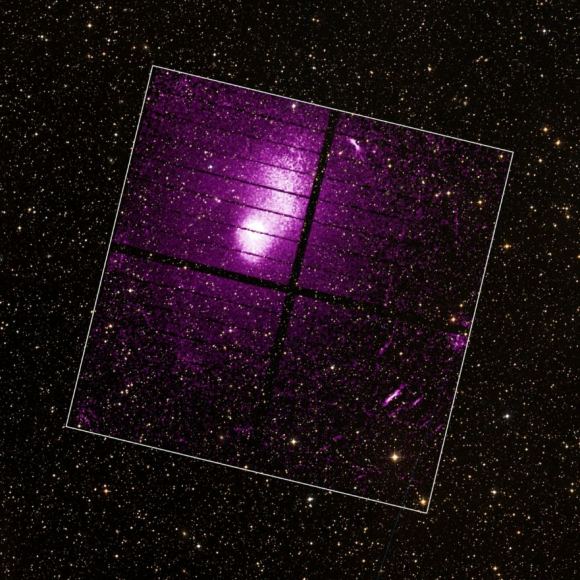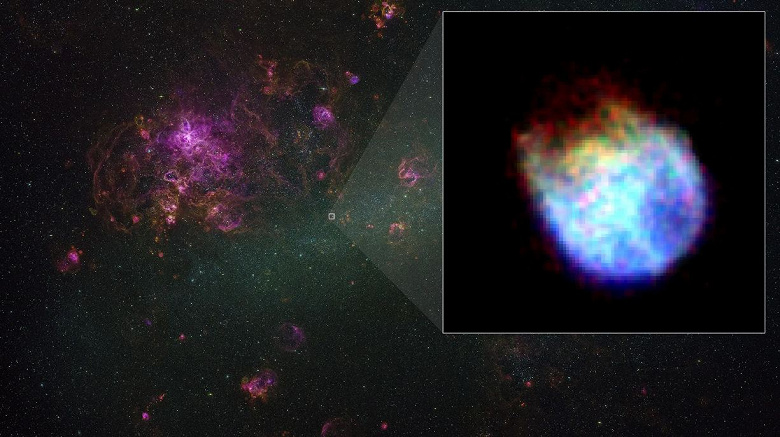XRISM is temporarily replacing aging observatories, but has already provided new opportunities for studying X-ray sources in the
range
The XRISM (X-ray Imaging and Spectroscopy Mission) observatory, a joint mission between NASA and JAXA, successfully began its operation in Earth orbit on September 6, 2023. Although science operations will begin later, the mission team recently released several “first light” images provided by the telescope.
The existing X-ray observatories XMM Newton and Chandra, which are nearing completion, will soon need replacement. The European observatory ATHENA, which will take over their functions, is not scheduled to launch until 2035, which will lead to a temporary gap in X-ray coverage. Japan's Hitomi Observatory was designed to replace aging observatories, but it broke down within weeks of launch.
The XRISM mission is designed as a temporary solution, but it is highly powerful and will provide valuable scientific data. According to NASA's XRISM principal investigator Richard Kelly, XRISM will provide the scientific community with an opportunity to look at previously unexplored X-ray sources. Astrophysicists will be able to obtain X-ray images and study the composition, motion and physical properties of X-ray sources. The first images provided by the XRISM telescope already show its high power.
XRISM is equipped with two tools: Resolve and Xtend. Resolve is a microcalorimeter spectrometer that operates just above absolute zero: when a photon hits it, it heats the detector by a certain amount related to its energy. Xtend is a higher resolution X-ray CCD camera than its predecessor at Hitomi.
The first XRISM image shows supernova remnant N132D in the Large Magellanic Cloud. The remnant is almost invisible in the optical range, but is bright in the X-ray range. XRISM provided the most detailed X-ray spectrum of N132D yet. The progenitor star of this remnant was 15 times more massive than the Sun and exhausted its hydrogen reserves, resulting in a supernova explosion. The supernova remnant is now about 3,000 years old and continues to expand. This leads to the spread of heavy elements throughout the galaxy, heating the interstellar medium and accelerating cosmic rays. The shock waves resulting from this process can compress nearby gas and promote the formation of new stars.

XRISM project scientist at NASA Brian Williams explains that these heavy elements were created in the original star and dispersed after its explosion, allowing astronomers to not only determine the abundance of various elements, but also study their temperature, density and direction of motion with unprecedented precision. These data can provide valuable information about the progenitor star and the explosion itself.
One of the important tasks in astrophysics is measuring the chemical composition of objects, and in this XRISM has exceeded expectations. XRISM project manager at NASA Goddard Lilian Reichental reports that even early in the setup process, Resolve has already demonstrated a spectral resolution of 5 electron volts, exceeding the target of 7 electron volts. This means that this telescope will provide more detailed chemical maps.
The Xtend X-ray camera plays an important role in observations because its large field of view allows it to cover an area 60% larger than the size of the full Moon. The scientific team has published an X-ray image of the galaxy cluster Abell 2319, which is the closest to us and is often studied. The purple color represents gas left over from billions of years of evolution and death of stars. XRISM will determine which elements are present and how abundant they are, especially elements heavier than hydrogen and helium, which are called “metals” in astronomy. These observations will help expand our understanding of how the Universe has become rich in metals over its more than 13 billion-year history.
Astronomers have already studied the galaxy cluster Abell 2319 using the Chandra Observatory and discovered various substructures. They discovered cold fronts between masses of colder and warmer gases, as well as even finer substructures within these fronts. This indicates processes of galaxy mergers and interaction with active galactic cluster nuclei. Abell 2319 is currently in the process of merging, and XRISM, which is a more powerful instrument than Chandra, will reveal even more details about this process.
However, despite its success, XRISM faced its first problem. The aperture safety door protecting the Resolve detector prior to launch did not open. This means that photons with energies below 1700 electron volts will not be able to reach the detector. XRISM personnel have made several attempts to open the door, but have so far been unsuccessful. If it remains closed, the telescope will not be able to detect photons with energies below 1700 electron volts, although it was designed to measure photons even with energies of 300 electron volts. However, this issue does not affect the Xtend camera and the XRISM team continues to work to resolve the issue.

